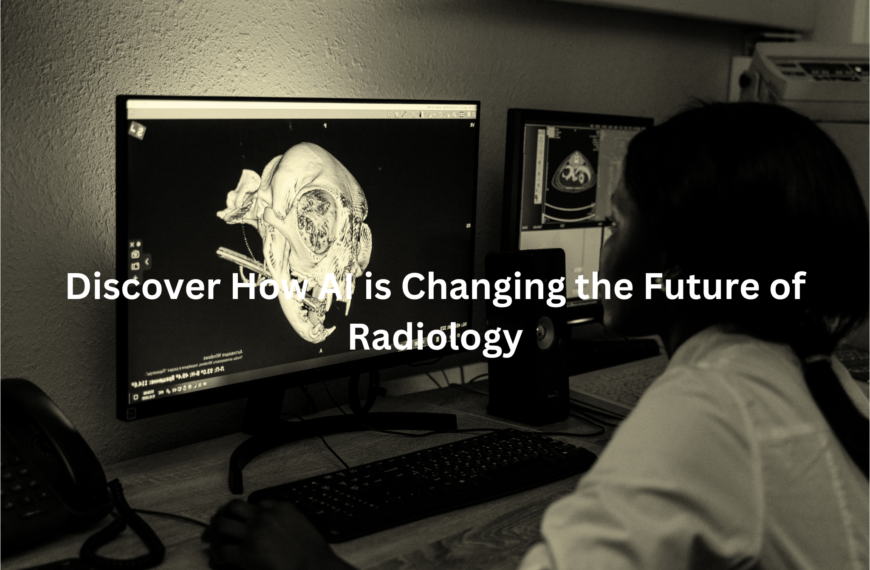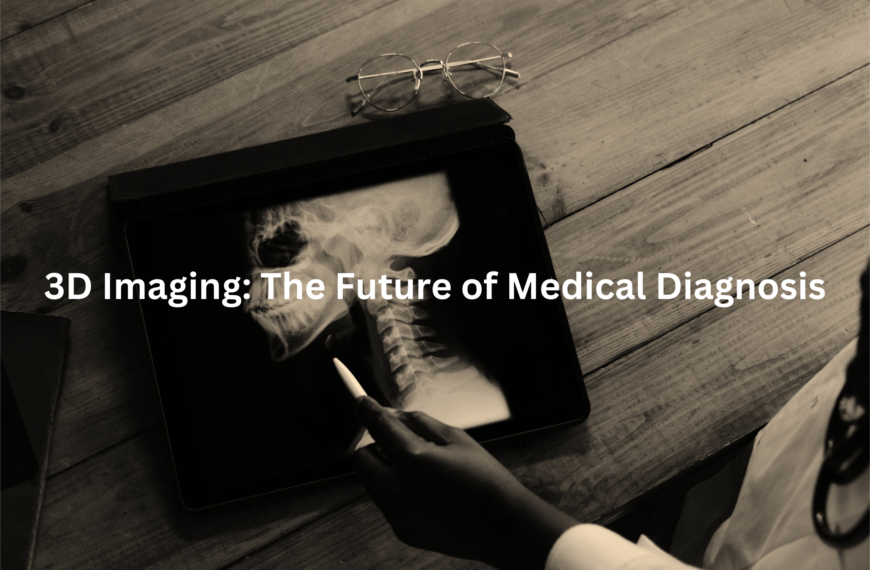Learn about portable imaging and how it helps patients in care facilities get high-quality images quickly and safely.
Sometimes, patients can’t be moved easily—whether they’re in a hospital bed, an aged care facility, or even at home. Portable imaging steps in as a quiet hero, bringing the technology to them instead of the other way around. It’s like giving care a bit of flexibility, meeting people where they are.
X-rays, ultrasounds, and other scans can all be done without the stress of relocating someone who’s already unwell. It’s not just about convenience; it’s about dignity and comfort. Ever wondered how this tech works or why it’s so important in healthcare? Keep reading to see how it’s changing lives.
Key Takeaway
- Portable imaging is helpful for patients who can’t move easily.
- It provides high-quality images right at the bedside.
- Healthcare professionals can make faster decisions using portable imaging.
Understanding Portable Imaging
Portable imaging is a type of medical imaging that’s designed to be used in different healthcare settings, like hospitals or aged care homes. It includes machines such as portable x-ray units, which can be moved easily to where they’re needed. These machines allow doctors to take images without having to move the patient.
For example, if someone is in intensive care, a portable x-ray machine can capture pictures of their chest while they stay in bed. This is especially helpful for keeping patients safe and comfortable. It also means doctors can quickly see what’s happening inside the body.
Portable imaging is particularly useful for patients who might feel anxious or uncomfortable during medical procedures. If someone is unwell and stuck in bed, being moved around can be stressful or even painful. Portable imaging solves this problem by bringing the equipment to the patient. It’s almost like having a mini hospital right at their bedside.
Plus, it can save time. Instead of waiting for an appointment or being wheeled to another room, doctors can get the images they need straight away. This can lead to faster treatment, which is critical for patients needing urgent care.
The Benefits of Portable Imaging

There are plenty of benefits to using portable imaging.
Firstly, it improves patient care. When doctors can take images right at the patient’s bedside, they can make faster decisions. This is especially important for people who are seriously ill and need immediate treatment. Secondly, the quality of the images is excellent. Modern portable x-ray machines and digital radiography systems produce sharp, clear pictures, making it easier for doctors to spot problems.
Another big advantage is that portable imaging can reduce the risk of infections. Patients don’t need to be moved through the hospital, which lowers their exposure to germs. This is especially important for elderly patients or those with weak immune systems. On top of that, portable imaging often uses low-dose x-rays, which means patients are exposed to less radiation while still getting high-quality images.
Here’s a quick list of the main benefits:
- Convenience for Patients: Imaging can be done without moving the patient, reducing stress.
- Time-Saving: Doctors can access results quickly, speeding up treatment plans.
- Improved Safety: Less movement means a lower risk of falls or complications, especially for older patients.
- High-Quality Images: Portable machines provide clear, detailed pictures for accurate diagnoses.
Different Types of Portable Imaging Machines
There are a few kinds of machines that fall under portable imaging, each with its own purpose.
- Hand-held x-ray units: These are small and light, making them easy to carry to a patient’s bedside. They’re perfect for quick imaging and are often used in emergencies.
- Digital radiography (DR) systems: These systems provide high-quality images and allow doctors to see the results immediately. They’re faster and more efficient than older x-ray machines, which helps speed up the process of diagnosing and treating patients.
- Portable MRI systems: While these are bigger than x-ray machines, some hospitals have portable MRIs for brain imaging. They’re especially useful for patients who can’t be moved easily. These machines can be wheeled into a patient’s room, making it possible to perform MRI scans without the need for transport.
Each of these machines plays a role in improving patient care. They allow doctors to gather the information they need while keeping patients as comfortable and safe as possible. It’s pretty remarkable how much of a difference this technology can make.
How Portable Imaging Works
Portable imaging devices, like x-ray machines, work by using rays that pass through the body and hit a special sensor. This creates an image showing the body’s internal structures. For example, an x-ray can clearly show a broken bone, helping doctors quickly figure out what’s wrong.
One of the best features of portable imaging is that the images can be viewed in real time. As soon as the picture is taken, doctors can look at it and make decisions straight away. This is especially important in emergencies, where every second counts.
Here are some key benefits of how portable imaging works:
- Instant Results: Doctors can see the images immediately.
- Mobility: Machines can be brought to the patient, avoiding unnecessary transport.
- Ease of Use: The devices are simple to operate, and healthcare professionals are trained to use them with precision.
By combining advanced technology with expert training, portable imaging has become an essential part of modern healthcare.
Portable Imaging in Aged Care Facilities
Portable imaging has become a helpful tool in aged care facilities. Many elderly residents find it hard to move around, and portable imaging systems make it possible to bring care directly to them. For example, if an elderly person has a fall, a portable x-ray machine can be used to check for fractures right in their room. This avoids the need to move them, which could cause more harm.
Keeping patients in their rooms is not just about convenience—it’s about safety. Moving elderly patients can sometimes lead to complications because they’re often fragile. Portable imaging also helps reduce stress for both patients and their families. Staying in a familiar space, surrounded by trusted caregivers, can make medical procedures feel less scary. It’s not just about taking pictures of bones or organs; it’s about creating a calm and reassuring environment.
The Importance of Image Quality
Good image quality is critical in medical imaging. Portable imaging systems are built to produce clear, high-quality images, which doctors rely on to make accurate diagnoses. These machines use low-dose x-rays to limit radiation exposure, so patients get the images they need without unnecessary risks.
As technology improves, the quality of portable imaging keeps getting better. This means doctors can see tiny details that might have been missed before. For example, in an emergency like a stroke, a high-quality image can show if there’s a blockage in the brain. Quick and clear imaging can help doctors act fast, which can save lives and improve recovery.
Portable imaging is also useful for monitoring ongoing conditions. If a patient has a lung infection, for instance, doctors can track how well the treatment is working by comparing images over time. It’s a tool that helps with both immediate care and long-term planning.
Safety and Infection Control
Infection control is a big deal in healthcare, especially in aged care and hospitals. Portable imaging helps reduce the spread of germs by keeping patients in their rooms. They don’t have to travel through busy hallways or sit in crowded waiting areas where infections can spread.
These machines are designed with safety in mind:
- Easy to clean: Portable imaging equipment can be sanitised thoroughly between uses.
- No unnecessary transport: Patients stay in one place, which lowers the risk of falls or other accidents during movement.
This approach not only keeps patients safe but also gives families peace of mind. They can feel confident that their loved ones are being cared for in a clean and controlled environment.
How Portable Imaging Affects Clinical Decisions
Portable imaging has changed how doctors make decisions. By bringing high-quality imaging to the patient’s bedside, healthcare professionals can act faster. This is especially important for critically ill patients who can’t afford to wait.
Take strokes, for example. If a patient shows symptoms of a stroke, portable imaging can quickly show what’s happening in the brain. Doctors can then decide on the best treatment, whether it’s medication or surgery. Acting quickly in these situations can save lives.
Some of the advantages of bedside imaging include:
- Real-time results: Doctors can see the images right away and make decisions on the spot.
- Better planning: Clear images help doctors decide the next steps, like whether surgery is needed.
- Emergency care: In urgent situations, portable imaging allows for immediate action.
This technology gives healthcare teams the tools they need to make accurate, timely decisions. It’s especially valuable in high-pressure situations where every second counts. [1]
The Future of Portable Imaging
Portable imaging is only going to get better. New technologies, like artificial intelligence (AI), are already being added to imaging devices. AI can help by analysing images quickly and pointing out possible problems. This could make the whole process faster and more accurate. [2]
As these systems improve, they’ll likely become even more common in hospitals and aged care facilities. With an ageing population, the need for portable imaging is expected to grow. These machines make healthcare more accessible and efficient, which benefits everyone involved.
In the future, we might see portable imaging machines that are lighter, easier to use, and even more advanced. The goal is to provide high-quality care without the stress of moving patients around. It’s an exciting time for medical imaging, and the improvements ahead will likely make a big difference for both patients and healthcare workers.
FAQ
Can portable imaging systems provide high quality results compared to traditional medical imaging?
Many portable imaging systems now deliver quality images comparable to fixed units. Modern digital radiography and mobile DR systems have improved image quality significantly, making diagnostic imaging more accessible without compromising results.
How do healthcare professionals maintain infection control when using portable imaging devices?
Healthcare settings prioritise strict infection control protocols for mobile radiology equipment. The portable systems are designed for easy cleaning between patient visits, while digital radiography reduces physical contact points, helping prevent cross-contamination in care facilities.
What role does artificial intelligence play in portable diagnostic imaging?
AI enhances portable imaging by improving image quality, helping healthcare professionals make faster clinical decisions, and enabling more efficient clinical workflows. This technology is particularly valuable in intensive care settings where quick diagnosis is crucial.
How does low dose radiation technology work in portable ray systems?
Modern portable ray units incorporate low dose technology while maintaining high frequency capabilities. These ray systems minimise ionising radiation exposure for both patients and caregivers by their side, making the imaging process safer for everyone involved.
What makes hand held imaging devices suitable for aged care facilities?
Hand held imaging devices offer point of care benefits in aged care settings. These portable digital systems eliminate patient transport concerns, allowing patients can remain in a safe and comfortable setting while receiving necessary imaging services.
Why are portable MR brain imaging systems becoming popular in neurocritical care?
Low field portable brain imaging using conventional MRI technology is revolutionising neurocritical care. These mobile imaging systems help monitor critically ill patients while they stay in their care facility, enabling continuous monitoring without risky transfers.
What factors influence the cost of portable imaging equipment?
The wide range of portable systems available comes with varying price points. While high cost is often associated with DR panels and advanced ray generators, the long-term benefits of efficient clinical workflows and reduced patient transport needs can offset initial investments.
How do portable imaging devices benefit patient care in healthcare settings?
Mobile DR systems allow healthcare professionals to bring imaging services directly to patients. This is especially valuable when patients can remain in their rooms, reducing adverse events associated with patient transport while ensuring caregivers by their side can assist throughout the procedure.
Conclusion
Portable imaging’s changing how patient care works, especially in hospitals and aged care. It’s quick, brings high-quality images straight to the bedside, and helps doctors decide faster. This is huge for patients who can’t be moved, like the critically ill. With tech improving all the time, portable imaging’s only going to get better and more common. It’s making medical care safer and more comfortable, which I reckon is the whole point, really.
References
- https://anif.org.au/news/regional-pocmr/
- https://www.uq.edu.au/news/article/2020/06/1-million-develop-portable-mri-device




